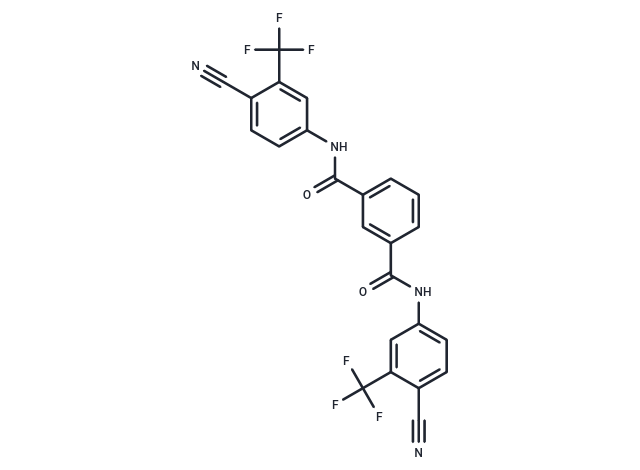Shopping Cart
- Remove All
 Your shopping cart is currently empty
Your shopping cart is currently empty

DJ-V-159 is a GPRC6A agonist, targeting the G protein-coupled receptor family C group 6 member A (GPRC6A).

| Pack Size | Price | Availability | Quantity |
|---|---|---|---|
| 2 mg | $30 | In Stock | |
| 5 mg | $48 | In Stock | |
| 10 mg | $79 | In Stock | |
| 25 mg | $162 | In Stock | |
| 50 mg | $283 | In Stock | |
| 100 mg | $455 | In Stock | |
| 500 mg | $987 | In Stock |
| Description | DJ-V-159 is a GPRC6A agonist, targeting the G protein-coupled receptor family C group 6 member A (GPRC6A). |
| In vitro | DJ-V159 activates ERK in HEK-293 cells transfected with GPRC6A but not in non-transfected HEK-293 cells, with potency similar to L-Arg. Additionally, DJ-V159 dose-dependently stimulates cAMP production in GPRC6A-expressing HEK-293 cells at 0.2 nM concentrations in the media. DJ-V159 also stimulates insulin secretion in mouse beta-cell MIN-6 cells, with an insulin stimulation index (SI) similar to Ocn, a known ligand of GPRC6A [1]. |
| In vivo | DJ-V-159 (10 mg/kg, i.p.) reduces blood glucose levels in wild-type mice at 60 and 90 minutes, whereas the vehicle (95% PEG + 5% DMSO) has no effect on blood glucose. DJ-V-159 (10 mg/kg, i.p.) reduces blood glucose levels in wild-type mice by 43.6% and 41.9% at 60 and 90 minutes, respectively. The mice tolerated this short-term exposure to DJ-V-159 without any overt side-effects. DJ-V-159, however, is almost in or on the boundary of the Lipinski's Rule of Five [1]. |
| Alias | DJ-V159 |
| Molecular Weight | 502.37 |
| Formula | C24H12F6N4O2 |
| Cas No. | 2253744-53-3 |
| Smiles | FC(F)(F)c1cc(NC(=O)c2cccc(c2)C(=O)Nc2ccc(C#N)c(c2)C(F)(F)F)ccc1C#N |
| Relative Density. | no data available |
| Storage | Powder: -20°C for 3 years | In solvent: -80°C for 1 year | Shipping with blue ice. | ||||||||||||||||||||
| Solubility Information | DMSO: 5.02 mg/mL (10 mM) | ||||||||||||||||||||
Solution Preparation Table | |||||||||||||||||||||
DMSO
| |||||||||||||||||||||

Copyright © 2015-2024 TargetMol Chemicals Inc. All Rights Reserved.